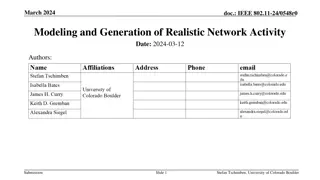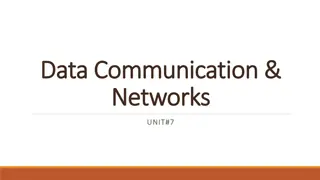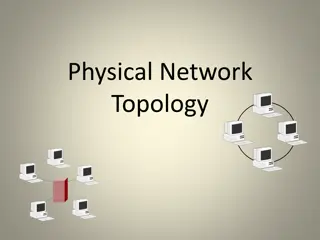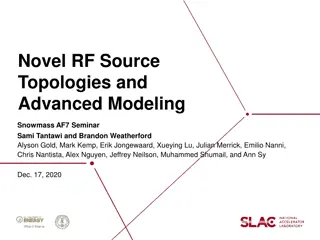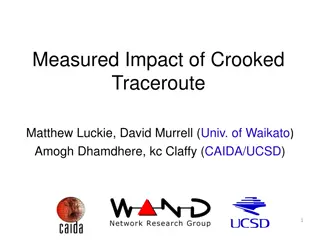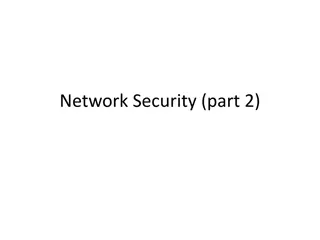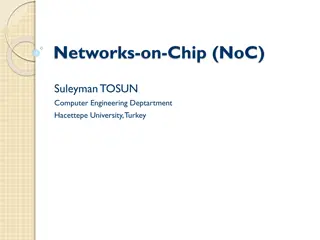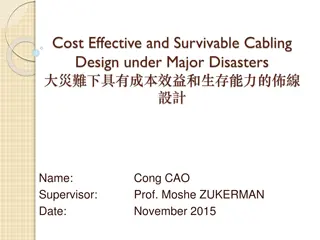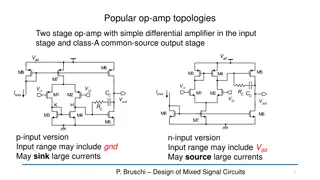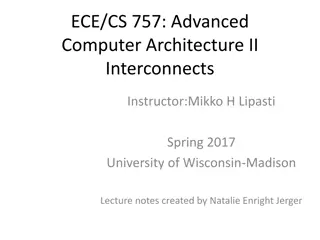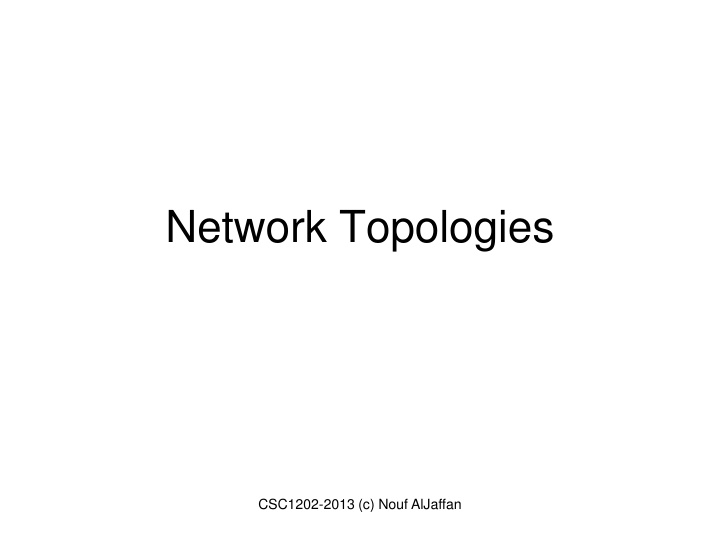
LAN Physical Topologies: Uses, Advantages, and Disadvantages
Explore the basic and hybrid LAN physical topologies, including bus, ring, star, and mesh, along with backbone structures. Learn about the importance of selecting the right topology and its impact on network equipment, capabilities, growth, and management.
Download Presentation

Please find below an Image/Link to download the presentation.
The content on the website is provided AS IS for your information and personal use only. It may not be sold, licensed, or shared on other websites without obtaining consent from the author. If you encounter any issues during the download, it is possible that the publisher has removed the file from their server.
You are allowed to download the files provided on this website for personal or commercial use, subject to the condition that they are used lawfully. All files are the property of their respective owners.
The content on the website is provided AS IS for your information and personal use only. It may not be sold, licensed, or shared on other websites without obtaining consent from the author.
E N D
Presentation Transcript
Network Topologies CSC1202-2013 (c) Nouf AlJaffan
Objectives Describe the basic and hybrid LAN physical topologies, and their uses, advantages and disadvantages. Describe the backbone structures that form the foundation for most LANs CSC1202-2013 (c) Nouf AlJaffan
Simple Physical Topologies Physical topology:physical layout of nodes on a network Three fundamental shapes: Bus Ring Star Mesh May create hybrid topologies Topology integral to type of network, cabling infrastructure, and transmission media used CSC1202-2013 (c) Nouf AlJaffan
Why we need a topology Choosing one topology over another can impact : type of equipment the network needs capabilities of the equipment network s growth way a network is managed CSC1202-2013 (c) Nouf AlJaffan
Bus CSC1202-2013 (c) Nouf AlJaffan
Simple Physical Topologies A Bus topology consists of a single cable called a backbone connecting all nodes on a network without intervening connectivity devices CSC1202-2013 (c) Nouf AlJaffan
Bus (continued) Devices share responsibility for getting data from one point to another Terminators stop signals after reaching end of wire Prevent signal bounce Inexpensive, not very scalable Difficult to troubleshoot, not fault-tolerant CSC1202-2013 (c) Nouf AlJaffan
Bus Advantages Works well for small networks Easy to install Relatively inexpensive to implement Disadvantage Management costs can be high Network disruption when computers are added or removed A break in the cable will prevent all systems from accessing the network. Difficult to troubleshoot CSC1202-2013 (c) Nouf AlJaffan
Ring CSC1202-2013 (c) Nouf AlJaffan
Simple Physical Topologies Ring topology Each node is connected to the two nearest nodes so the entire network forms a circle One method for passing data on ring networks is token passing Data travels around the network Traffic flows in one direction Slow performance One workstation goes down; whole network goes down Network is highly dependent CSC1202-2013 (c) Nouf AlJaffan
Ring Advantages Cable faults are easily located, making troubleshooting easier Ring networks are moderately easy to install Disadvantage Expensive Requires more cable and network equipment at the start Expansion to the network can cause network disruption A single break in the cable can disrupt the entire network CSC1202-2013 (c) Nouf AlJaffan
Star CSC1202-2013 (c) Nouf AlJaffan
Simple Physical Topologies Star topology Every node on the network is connected through a central device called hub or switch. CSC1202-2013 (c) Nouf AlJaffan
Star (continued) Any single cable connects only two devices Cabling problems affect two nodes at most Requires more cabling than ring or bus networks More fault-tolerant Easily moved, isolated, or interconnected with other networks Scalable Supports max of 1024 addressable nodes on logical network CSC1202-2013 (c) Nouf AlJaffan
Star Advantages Good option for modern networks Low startup costs Easy to manage Offers opportunities for expansion Most popular topology in use; wide variety of equipment available Disadvantage Hub is a single point of failure Requires more cable than the bus CSC1202-2013 (c) Nouf AlJaffan
Mesh CSC1202-2013 (c) Nouf AlJaffan
Simple Physical Topologies Mesh Topology: Each computer connects to every other. High level of redundancy. Rarely used. Wiring is very complicated Cabling cost is high Troubleshooting a failed cable is tricky A variation hybrid mesh create point to point connection between specific network devices, often seen in WAN implementation. CSC1202-2013 (c) Nouf AlJaffan
Mesh Advantages Robust There is the advantage of privacy or security The network can be expanded without disruption to current uses Point to point links make fault identification and fault isolation easy Disadvantage Requires more cable than the other LAN topologies Complicated implementation Installation and reconnection are difficult. Sheer bulk of wiring can be greater than the available space can accommodate Expensive CSC1202-2013 (c) Nouf AlJaffan
Hybrid Physical Topologies One example of HybridTopology is Treetopology Treetopology is a combination of Bus and Star topology. It consists of groups of star-configured workstations connected to a linear bus backbone cable. If the backbone line breaks, the entire segment goes down An example of this network could be cable TV technology CSC1202-2013 (c) Nouf AlJaffan
Choosing a Topology BUS network is small network will not be frequently reconfigured least expensive solution is required network is not expected to grow much STAR it must be easy to add/remove PCs it must be easy to troubleshoot network is large network is expected to grow in the future RING network must operate reasonably under heavy load higher speed network is required network will not be frequently reconfigured CSC1202-2013 (c) Nouf AlJaffan

